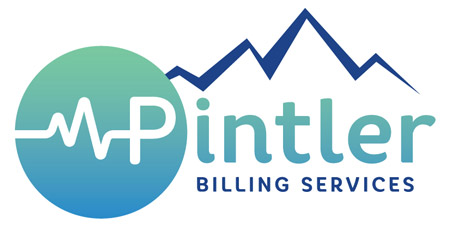How are ambulance services funded? / ¿Cómo se financian los servicios de ambulancia?
A: In Montana ambulances are not considered “essential” services, meaning they are not required to exist wherever a certain population of people does, and the local government is not required to fund them. Although many municipalities allocate a small portion of tax revenue to local ambulance agencies, this amount does not equate to enough to operate the service. That leaves ambulance providers to fund themselves by applying for grants, recruiting volunteers, and billing patients for their transports.
R: Las ambulancias de Montana no se consideran servicios “esenciales”, lo que significa que no están obligadas a existir dondequiera que lo haga una cierta población de personas, y el gobierno local no está obligado a financiarlas. Aunque muchos municipios asignan una pequeña porción de los ingresos fiscales a las agencias locales de ambulancias, esta cantidad no equivale a suficiente para operar el servicio. Eso deja que los proveedores de ambulancias se financien solicitando subvenciones, reclutando voluntarios y facturando a los pacientes para sus transportes.
I have insurance, why am I receiving a bill for my ambulance transport? / Si tengo seguro ¿Por qué estoy recibiendo una factura por mi transporte de ambulancia?
A: Even with insurance coverage there is often a cost sharing responsibility for patients who receive ambulance transportation or services. It is also possible that you have not met your deductible, or that you are being billed for a co-pay or co-insurance. In some cases, the ambulance provider who transported you may not be in-network with your insurance company which sometimes results in a larger patient responsibility amount and may also result in your charges being applied to an out-of-network deductible. If you have a question or concerns about the way your claim was processed, we suggest that you call your insurance company.
R: Incluso con la cobertura del seguro a menudo hay una responsabilidad de reparto de costos para los pacientes que reciben transporte o servicios de ambulancia. También es posible que no haya cumplido con su deducible, o que se le esté facturando por un copago o coaseguro. En algunos casos, el proveedor de ambulancias que lo transportó puede no estar en la red con su compañía de seguros, lo que a veces resulta en un monto mayor de responsabilidad del paciente y también puede resultar en que sus cargos se apliquen pregunta o inquietud sobre la forma en que se procesó su reclamo, le sugerimos que llame su compañía de seguros.
Someone else called the ambulance and I was transported. Why am I receiving a bill? / Alguien más llamó a la ambulancia y yo fui transportado. ¿Por qué estoy recibiendo una factura?
A: The ambulance crew responds to calls for assistance regardless of who calls 911. Once they arrive, they provide care if necessary and allow a patient the option to refuse transport. The costs for running the ambulance and staff are the same regardless of who calls or the reason they are paged out. If you feel there is an error with your bill, please call our office.
R: El equipo de ambulancias responde a las llamadas de asistencia, independientemente de quién llame al 911. Una vez que llegan, prestan atención si es necesario y permiten a un paciente la opción de rechazar el transporte. Los costos de administrar la ambulancia y el personal son los mismos independientemente de a quién llame o la razón por la que son pagados. Si siente que hay un error con su factura, por favor llame a nuestra oficina.
I already received a bill from the hospital and gave them my insurance information. Why am I receiving a bill? / Flujo ya recibí una factura del hospital y les di mi información de seguro. ¿Por qué estoy recibiendo una factura?
A: Your ambulance transport is a separate service from the hospital services and is billed separately by a different office. Please call our office to provide insurance or payment information.
R: Su transporte de ambulancia es un servicio separado de los servicios hospitalarios y es facturado por separado por una oficina diferente. Por favor, llame a nuestra oficina para proporcionar información de seguro o pago.
What factors affect the rate I pay for my ambulance transport? / ¿Qué factores afectan la tarifa que pagó por mí transporte de ambulancia?
A: Ambulance providers face many costs and expenses before they even leave the barn to respond to a call. Ambulance vehicles are costly to obtain and maintain, recruitment and training of EMTs and paramedics takes time and financial investment, and the associated costs to house the ambulance and staff are also expensive. These are the costs for the ambulance to “be ready”. Once an ambulance is dispatched to a call, the supplies and equipment used as well as the time and risk incurred by the crew add another layer of expense. All of these costs are calculated to determine an average cost per run, and this is how the rates charged are determined.
R: Los proveedores de ambulancias se enfrentan a muchos costos y gastos antes de salir del género para responder a una llamada. Los vehículos de ambulancias son costosos de obtener y mantener, la contracción y capacitación de EMT y paramédicos lleva tiempo e inversión financiera, y los costos asociados para albergar la ambulancia y el personal son muy caros. Estos son los costos para que la ambulancia “esté lista”. Una vez que se envía una ambulancia a llamar, los suministros y el equipo utilizados, así como el tiempo y el riesgo en que incurre la tripulación, añaden otra capa de gastos. Todos los costos se calculan para determinar un costo promedio por ejecución, y así es como se determinan las tarifas cobradas.
I can’t afford to pay my bill, what should I do? / No puedo permitirme pagar mi factura, ¿que debe hacer?
A: Please call our office. You may be eligible for financial assistance or a reduction in charges based on your individual situation.
R: Por favor, llama a nuestra oficina. Puede optar a asistencia financiera o una reducción de la carga en función de su situación individual.
I want to set up a payment plan; can I pay my bill over time? / Quiero establecer un plan de pago; ¿puedo pagar mi factura con el tiempo?
A: Please call our office. It may be possible to pay over time based on the individual policies of the ambulance provider who transported you.
R: Por favor, llama a nuestra oficina. Puede ser posible pagar con el tiempo en función de las políticas individuales del proveedor de ambulancias que lo transportó.

